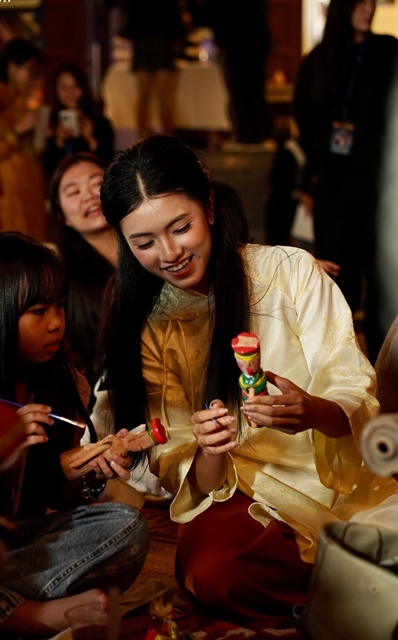 Life & Style
Life & Style
.jpeg)
Bình Định is not only well known nationwide for its dishes with seafood, such as fried squid with garlic sauce but also traditional handmade bún dây (vermicelli).
Hoàng Lan
Bình Định is not only well known nationwide for its dishes with seafood, such as fried squid with garlic sauce but also traditional handmade bún dây (vermicelli).
During my working trip to the southern province of Bình Định, I was lucky to enjoy the dish one last time before the COVID-19 pandemic spread in the country early this year.
I will never forget the special taste of the dish which is a natural yellow colour (normal vermicelli is often white), the bún dây threads are tough and fragrant with buttery fat from roast peanuts, hot chili and sour from the dipping sauce.
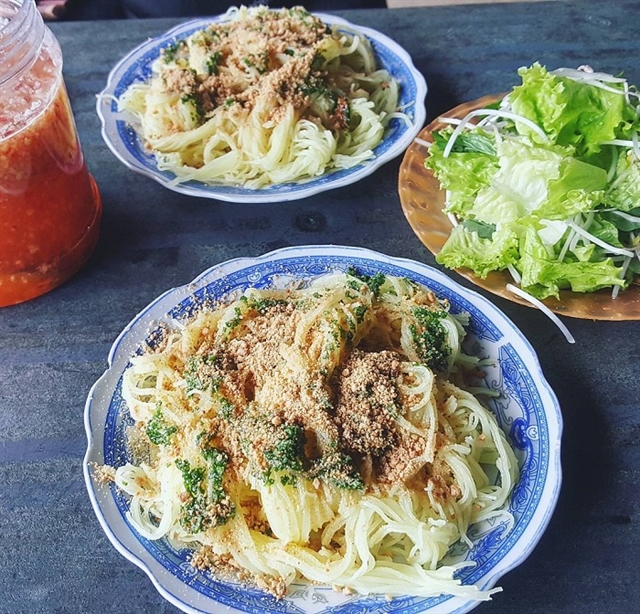
|
| Traditional handmade bún dây (vermicelli) from Bình Định helps to put the province on the map. — Photo dulichvietnam.com.vn |
I decided to meet a local maker to learn how to cook the dish at home in Hà Nội.
Lê Thị Hòa, 50, in Bồng Sơn Village of Hoài Nhơn District, who has been making bún dây for almost 30 years, said the process is rather complicated.
Differing from normal vermicelli which can be used with grilled pork known as bún chả or with broth such as bún vịt măng (duck and bamboo shoots), bún dây is most tasty when in mixed vermicelli style only.
The main ingredient is old rice. The best rice is left from the last rice season because this kind of rice helps to make the bún dây more tough compared to that made from new rice. The rice should be soaked in water for an hour and then dried before soaking it again in ash water for six hours, said Hòa.
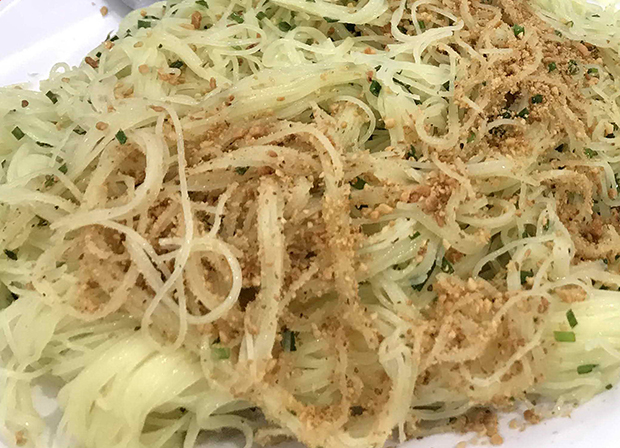
|
| Diners never forget bún dây made by locals from Bình Định's Bồng Sơn Village where the dish came into being. — Photo danviet.vn |
She said the ash water should be made from wood charcoal, particularly coconut charcoal because it helps to give the vermicelli a special fragrance.
“According to my experience, the good ash water decides the quality of vermicelli to ensure it is of a natural yellow colour, tough and tasty,” said Hòa, adding that the ash also helps to preserve bún dây for a longer time.
After soaking in ash water, the rice should be ground to become wet dough then cooked over a small fire, but it needs regular stirring to ensure it doesn't get burned. This is the most difficult stage that makes the bún dây tasty, she said, noting that after the wet dough is done, the maker has to take it out from the pot, let it cool then knead it well before putting it in a frame to press into thin threads.
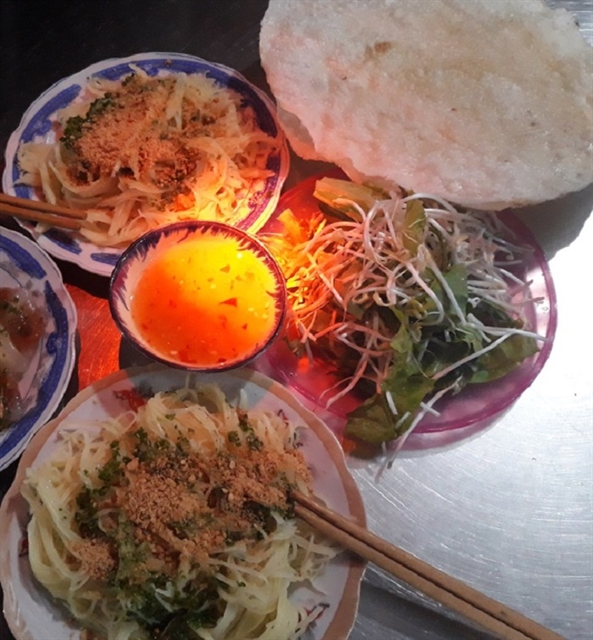
|
| Bún dây should be eaten in a leisurely way to enjoy its rich flavour. — Photo dulichvietnam.com.vn |
The threads are round and the size of your palm. They all are steamed, said Hòa. "This process is often done by me because with my experience, I know when the bún dây is cooked.”
The dish is more tasty when eaten cool and dipped in sauce which includes fried dried minced onions in cooking oil and fish sauce plus lemon juice, minced garlic, chili and sugar, said Hòa. Many diners, particularly young people, like mixing boiled pork belly and shrimp with the dish.
It is more enjoyable when topped with roast peanuts and fragrant herbs such as basil and coriander.
Hòa told me that Bồng Sơn Village is the birthplace of bún dây, where it has existed for a hundred years. It is also called bánh dây (dây cake) by many locals because of its size like a round loaf.
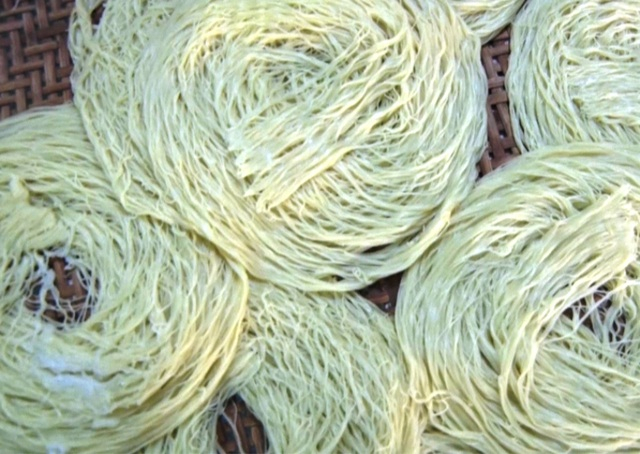
|
| Loafs of natural light yellow colour after being steamed. — Photo travelmag.vn |
The loafs are often placed in a big basket by sellers in the market or around the village in the morning and afternoon.
A tourist from the northern province of Cao Bằng named Hà Hải An, said every year she often visits her husband’s native village in Bồng Sơn so it is a good chance for her to enjoy the dish. She said unlike fast food nowadays, bún dây should be eaten in a leisurely way to enjoy its special taste and particularly the rich flavour of the fish sauce made from the Tam Quan sea fish. — VNS
.jpeg)

